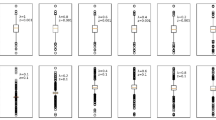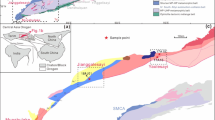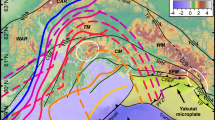Abstract
IN 1958, when correlating the pre-Tertiary stratigraphic successions then known in Malaya with those in Thailand, Alexander1 indicated that no sediments of Devonian age had been proved in either country at that time, although the possibility existed of their occurrence. During the course of a short visit to Malaya in July–August 1962, at the invitation of the Geological Survey, one of us (K. J. M.)2,3 was given and collected a number of rock specimens for conodont identification.
This is a preview of subscription content, access via your institution
Access options
Subscribe to this journal
Receive 51 print issues and online access
$199.00 per year
only $3.90 per issue
Buy this article
- Purchase on SpringerLink
- Instant access to full article PDF
Prices may be subject to local taxes which are calculated during checkout
Similar content being viewed by others
References
Alexander, J. B., Nature, 183, 230 (1959).
Müller, K. J., Moglichkeiten der Conodonten Stratigraphie (1959).
Müller, K. J., Geologische Rundschau, 49, 83 (1960).
Müller, K. J., and Müller, E. M., J. Palæontol., 31, 1069 (1957).
Author information
Authors and Affiliations
Rights and permissions
About this article
Cite this article
ALEXANDER, J., MÜLLER, K. Devonian Conodonts in Stratigraphic Succession of Malaya. Nature 197, 681 (1963). https://doi.org/10.1038/197681a0
Issue date:
DOI: https://doi.org/10.1038/197681a0
This article is cited by
-
Fortschritte der Mikropaläontologie in Deutschland mit einer Bibliographie für das Jahr 1964
Paläontologische Zeitschrift (1965)



